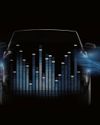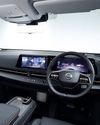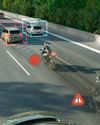Due to increasingly stringent emissions norms and the need for improved fuel efficiency, one option that auto motive OEMs are increasingly going in for is engine downsizing. Fewer cylinders and smaller engine capacities help OEMs reduce emissions and achieve better fuel economy. However, to ensure that smaller engines are still able to deliver the kind of power and performance that customers expect, manufacturers often use forced induction – turbocharging, supercharging or even both. Here, we take a look at some of the latest advancements in forced induction and their implications for manufacturers, suppliers and customers.

PERFORMANCE AND EFFICIENCY
Once the exclusive preserve of high-performance sports cars, forced induction engines are now commonly used across many vehicle segments, including smaller sedans and hatchbacks. In India, while turbocharged diesel engines have already seen widespread use over the last 10-15 years, a few turbocharged petrol engines have also been introduced in recent years, by OEMs like Maruti, Volkswagen and Skoda. With the upcoming BS VI norms, this trend is likely to continue and grow, with more OEMs following suit.
Between 2015 and 2020, due to upcoming regulations, car manufacturers will be required to reduce the average CO2 figure for their entire range of cars from 130 g/km to 95 g/km or less. This will necessitate the replacement of bigger, naturally aspirated engines with smaller, turbocharged or supercharged units that not only deliver the required horsepower, but are also more fuel efficient. The advantages are manifold – fewer, smaller cylinders in a forced induction engine means reduced internal friction levels, and better torque output even at lower engine rpm. And yes, it’s important for new engines to strong torque delivery at relatively lower rpms, since high engine revs often means bigger valve overlap (between intake and exhaust valve operation), which often means increased emissions.
Naturally aspirated engines can have a brake mean effective pressure (BMEP) of anywhere between 80 to 200 psi, while turbocharged engines start at around 220 psi, going up all the way to 320 psi, with the potential being there for even higher pressure. Hence, with better volumetric efficiency and higher specific output (the ratio between an engine’s size vis-à-vis its power and torque output), smaller forced induction engines will inevitably continue to replace bigger naturally aspirated engines.
TURBOCHARGING vs SUPERCHARGING
This story is from the October 2017 edition of Auto Tech Review.
Start your 7-day Magzter GOLD free trial to access thousands of curated premium stories, and 8,500+ magazines and newspapers.
Already a subscriber ? Sign In
This story is from the October 2017 edition of Auto Tech Review.
Start your 7-day Magzter GOLD free trial to access thousands of curated premium stories, and 8,500+ magazines and newspapers.
Already a subscriber? Sign In

Sound Generation For Enhanced Road Safety
With an ever-increasing number of fully electric and hybrid vehicles entering the market, we are witnessing a change in the acoustic experience in and around the car. The silent nature of the electric powertrain means that other road users miss the familiar acoustic cues that warn them of an approaching vehicle. To remedy this situation, Harman is working on various noise management solutions.

OBJECTIVE ASSESSMENT OF THE SAFETY CONTRIBUTION OF TODAY'S AUTOMOTIVE HEADLAMPS
Good lighting makes a major contribution to road safety. In 2011, the International Commission on Illumination (CIE) presented an evaluation system for headlamps that can objectively assess the quality of illumination and glare limitation. New light sources like LEDs and lighting functions (glare-free high beam, partial high beam) have been available for several years, so that an extension of the proven CIE method is necessary, which takes into account, among other things, changed switch-on and service lives of new lighting functions and represents a generally understandable evaluation system. An evaluation system presented in the following by the Technische Uni versität Darmstadt, which was developed by an encompassing expert commission, is intended to provide representative data and enable an objective evaluation of headlamp performance.

RAPIDO RE-INNOVATES TO CATER TO POST COVID-19 LAST MILE CONNECTIVITY
The rapid pace of urbanisation in the country has witnessed cities expanding and subsuming surrounding villages and smaller towns, evolving into Tier II and III cities.

FUNCTIONAL SAFETY STANDARDS TOP PRIORITY FOR FUTURE AUTOMOTIVE DEPLOYMENT
Increasing levels of electronic content in vehicles result in a large amount of software that is required to run the scenes behind the mechanical aspects of a vehicle. Electronic systems in automobiles are part of every section, from the powertrain to comfort and convenience systems as well as all types of safety equipment. This makes electronics and the software running these systems a critical part of the equation for future mobility solutions. In addition, putting standards in place to measure methods of developing, testing and functioning of such electronic systems also becomes highly relevant.

“BYD'S EV STRATEGY TO ENCOMPASS MOST FORMS OF TRANSPORTATION NEEDS IN INDIA”
The country’s electric vehicle (EV) ecosystem is grappling with a plethora of challenges even as it is striving to wriggle itself out of the ‘nascent stage’ tag. In an exclusive chat with Auto Tech Review, Zhang Jie Ketsu, Executive Director, BYD India shares his perspective on the current EV scenario and how the company intends to progress faster in the Indian automotive industry

SAFETY IN ELECTRIC AND AUTONOMOUS CARS – SIMULATION OF COMPLEX CRASH SCENARIOS
Electric and autonomous vehicles allow for novel seating arrangements and packaging strategies, presenting new safety challenges. Physical crash testing must be supplemented with virtual simulation to ensure vehicle safety on shorter development cycles. With its Simcenter Madymo MBS software, Siemens provides improved runtimes and the Active Human model, enabling accurate and rapid occupant safety analysis in complex crash scenarios.

KIA SONET – A MIGHTY OFFERING IN THE COMPACT SUV SEGMENT
It wouldn't be wrong to say that Kia Motors India has taken the Indian market by storm in less than 12 months of its presence in the market.

NISSAN'S NEW DIRECTION: ARIYA ALL-ELECTRIC
Marking a key milestone in Nissan’s transformation strategy, Ariya ticks a lot of boxes highlighting the strengths of the global automotive giant.

BETTER SAFETY WITH EMERGENCY BRAKE ASSIST FOR MOTORCYCLES
Rear-end collisions with a slower vehicle suddenly cutting into the lane and intersection accidents with cross-traffic are among the most frequent motorcycle accident types. Continental is now developing an emergency brake assist, which detects an imminent collision with a vehicle ahead or with an obstacle, warns the rider and supports him during braking

ADAS WILL SERVE AS CATALYST FOR IMPROVED VEHICLE SAFETY
The automotive industry across the globe is increasingly focussing on safety.